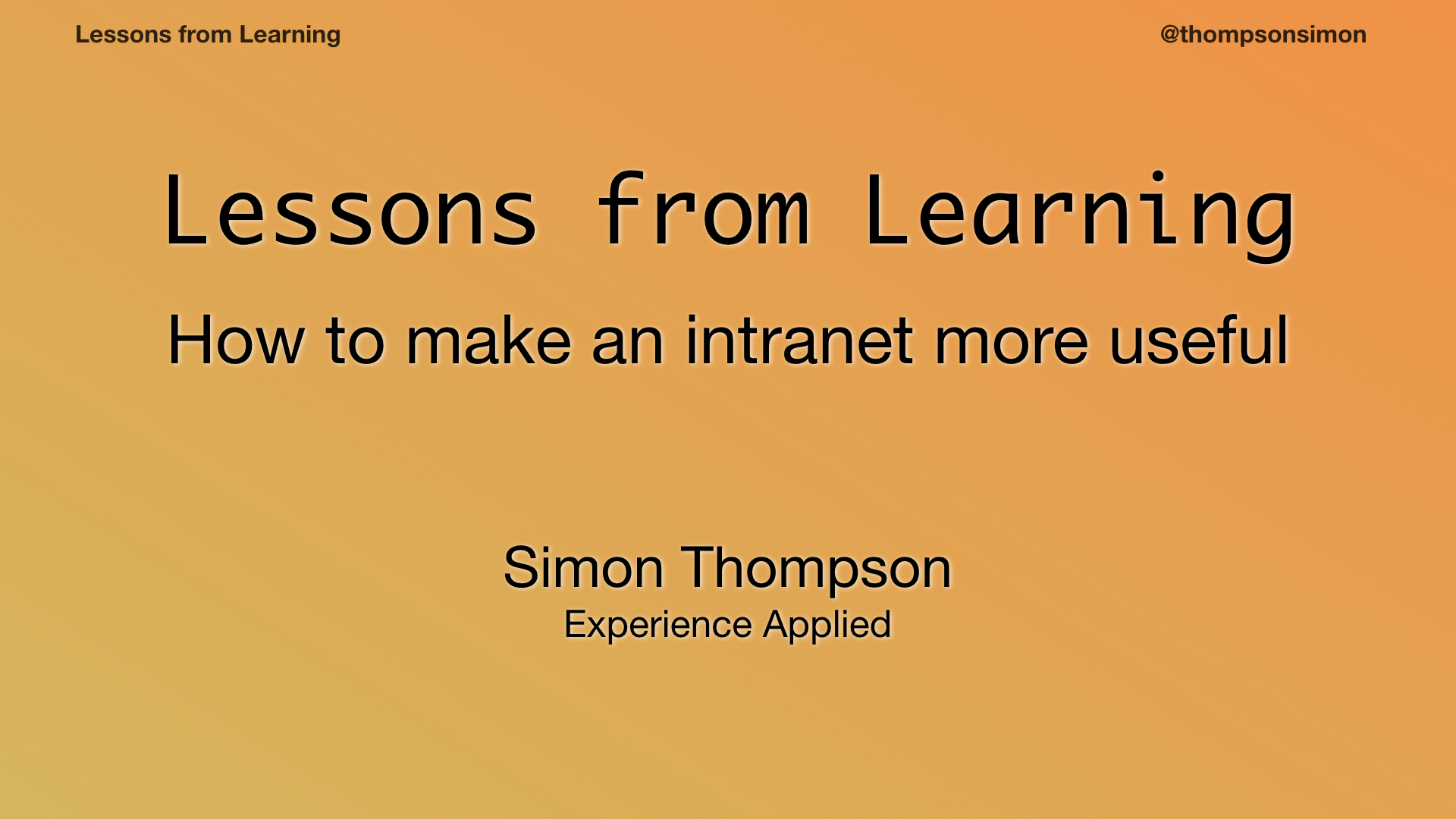Tag: digital workplace
-
Learning Technologies – a digital workplace perspective
Last week I got to spend a day and a half at the Learning Technologies exhibition in London, and had many interesting conversations. As I’ve commented before, learning tech feels like a strange parallel universe where intranets barely exist, so would this year’s show be different? Something borrowed, something blue There is a concern in
Written by
-
Lessons from Learning – the post
In 2019, I was thrilled to be invited to present my talk Lessons in Learning to the IntraTeam conference in Copenhagen. This is a summary of the majority of the talk, where I argued that intranet professionals need to pay more attention to learning and development. This talk originates a year before at IntraTeam Event
Written by
-
Here’s to the connectors…
Rather delightfully, Lisa Riemers last week described me as a superconnector. Okay, so she included me in a group of many people I admire in her post about the wonderful community around intranets How to succeed in life (and intranets). And it’s not just that I admire them, each of these people has contributed to my
Written by

